Why does my horse buck? 7 Common Occassions & Their Cause
While a normal behaviour, it can be dangerous for us. Learn about the most common times horses buck and why they are doing it.
Horses bucking is a very normal and natural horse behaviour.
However, we don’t really want them doing it when we are handling or riding them because we can get hurt.
There are a couple of different types of bucking our horses can do as well. Just a little kick out in protest to your ask, through to a full out bronco ride that doesn’t stop until they get you off.
Knowing the type of bucking your horse is doing can help you to problem solve and understand what they need to not buck.
1. Bucking when mounting
If you are too scared to mount your horse because they take of bucking you will most likely need a breaker to work with your horse. There are a couple of reasons for this behaviour.
Poor mounting technique has meant that being mounted has hurt for them. Digging your toes into their ribs, twisting the saddle as you mount, pulling the saddle over and pulling and clambering your way up their back.
Sore back. The twist and the pull of climbing up into the saddle aggravates an already sore back
Girthy. If they are muscle sore around the girth, the way the girth pulls as you twist and pull yourself into the saddle can hurt
Saddle doesn’t fit
Memory of previous pain from being mounted
Poor initial experience of breaking. A horse doesn’t need to be bucked out to accept the saddle and rider. They do need to get used to moving with the restriction of the girth around the ribs and the rider moving and wobbling around on the their back.
Topline and their back not being conditioned to support the weight of the rider.
Thumping or sitting heavy into the saddle.
Any of these problems will also come up as you are just riding. For example the first few steps off in walk trigger a bronco outburst, the transition to trot, just a simple turn. Any time the horse unexpectable and unexplainably tacks off in a broncing fit these things need to be addressed.
2. Bucking when putting your heels in or touching the flank.
It is important that you know that the flank is a very sensitive area for the horse. It is literally where rodeo riders tie a rope to make a horse buck.
This is also the most common place for riders to swing their leg into when they lose their balance, especially in they are gripping with the knee. Swinging your heel into your horse flank and gripping can be an auto eject button on a lot of horses.
Being an unbalanced, bouncy rider on a green, novice horse or a horse that is even the slightest bit sore through their back, nervous, anxious horses and horses that are a little intolerant. It takes a very special horse to look after an inexperienced rider - that’s why a lot of riding school horses and trail horses are worth their weight in gold. They don’t react to unbalanced riders. Working on your core and riding independently of your horse is and important skill to develop as a horse riding that wants to care for their horse and to help kicking or bucking out.
3. Horse bucks when excited.
A horse that can’t control its emotions can’t control its behaviour.
We can often see this kind of bucking when we let our horse out for a big gallop or if other horses are loose galloping around and playing and our horse wants to join in. They can also buck on a gallop because they’ve lost their balance and trying to catch it. This one just takes time correcting to let our horse know what is appropriate under saddle and what isn’t.
4. Horse bucks into canter when asked to canter
If your horse only really bucks going into canter this is a pretty strong sign of them being cold backed or working hollow and tight through their back.
With the way the trot strides work in a diagonal pair, they can work with their head down in a frame and not properly warm their back up.
Because they canter has a naturally roundedness and lift through the back, if they’re back isn’t warmed up properly they will use the transition to canter to stretch their back and jump into it. If you warm up the canter on the lunge before you ride it probably won’t happen under saddle. The may also baulk or kick out after poles or jumps because this also encourages them to use their back.
5. Horse bucks when asked to move forward
Bucking when asking to move forward the horse has commonly established an aversion to leg pressure and gone sour on their working.
Spicing it up by hacking out, having them fit for their job and doing other groundwork exercises can help. Spurs will make it worse and the whip also usually makes it worse.
6. Horse bucks after jump
As with bucking into canter, horses that buck after the jump are generally cold backed and need their back well warmed up. They sometimes also do it if they are scared of the jump fill.
I have had some horses that only buck after a jump if they clip the rail, so that could be either frustration with themselves for touching it or giving themselves a fright.
7. Horse bucks on the lunge
This one I’m less worried about.
If my horse has some bucks in his system and needs to warm his back up, I want him to do it on the lunge and not in the saddle. I still don’t want them to be crazy and out of control, but I’m ok with them kicking their legs around a bit. If I have the right facilities and may also free lunge and let them have a good run and a buck if they really want to play, get the crazies out of their system or want a good stretch.
Once we have identified the when of the bucking, we can start to look deeper into the why, and then start to work on the how.
Stay tuned for the next blog to see how we can correct bucking behaviours!
The Mounting Issue - Scary Tales from a Professional Rider
Horse’s that play up when being mounted leave us in the most vulnerable of positions.
For a good period of my career as a horse trainer and instructor my biggest worry was horses with issues with mounting. When mounting we are in such a vulnerable position - we are committed to getting onto the horse whilst not being balanced and in the saddle yet.
This fear started with a warmblood thoroughbred cross who would take off broncing when I would have one foot in the stirrup and the other one swinging over his back. He was a big lad and it would really hurt when I fell. I didn’t at the time understand why he was doing it and I didn’t know how to stop it. So I got scared. I had created the problem.
As a teenager I had a pony club instructor that drilled into me the pony club etiquette of mounting. This was where you stood at their shoulder facing their hindquarters with one foot in the stirrup and gracefully swung onto the back of the horse. I never successfully achieved it. My mounting technique became “stand facing the horses hindquarters with foot in the stirrup and hop, hop, hop until I was facing their head and then stand into the stirrup and pull myself up onto the horse from the front of the saddle.” This was fine with the horses that I had ridden up until that warmblood.
He had a large barrel that came down past the length of my leg. Without my awareness as I hop, hop, hoped around to face the front my toe would scrape along his ribs causing his body to tighten and tense up with the pain and discomfort. Then I would pull/haul myself up, twisting the saddle into his now tight and tense back. Standing into the saddle with one foot halfway over his back he would take off broncing leaving me no chance of pulling him up and staying in the saddle. I was just at the beginning of my career as a horse trainer and breaker and now was petrified of mounting unknown horses.
So for me the best way to overcome fear is a sprinkle of faith, a dust of trust and a full stocked armoury of knowledge. What does it look like if a horse is going to react to the mount? What does it feel like? Where do you see the warning signals? What’s the cause? What’s the trigger? But also how do we fix it?
Since that horse, I was able to refine my mounting technique to avoid being the trigger! I also had my fair share of other horses that had different reasons for having problems with being mounted and was able to learn how best to work with them to resolve their issues. I believe the mounting process is the most important process to have safely established because as riders, this is where we are most vulnerable. Also, a horse that figures out it can get out of work this way is the most difficult to fix. Ideally this should be addressed when they are broken in. In my training a prefer a horse that doesn’t know that this kind of behaviour is an option and trying to avoid the broncing out process in favour of the horse accepting the saddle and the restriction of the girth. Accepting my weight and my seat in the saddle. Accepting me as they figure out how to balance me when they move. And lastly established and sound enough through their topline to not need to buck in their transition to canter or other times in the trot etc.
Reasons a horse can bronc or take off in the process of being mounted:
Saddle is not fitted and causing pressure or pain
Problems with their spine or sacroiliac joint
Problems with the way the rider is mounting for example me scraping my toe along the ribs or plonking heavily into the saddle on the mount
The saddle being twisted as you mount
If a horse has had a bad experience being backed, or mounted (for example if at some stage they haven’t been taught to accept the saddle and girth or were sore through their back with someone mounting and it wasn’t addressed) and that memory being triggered
Figuring out it gets them out of work
Actively involve your horse in your training!
When our horses feel a part of their training, they are happier to work with you! Click her to learn moreSigns your horse is not going to let you safely mount
They are standing still or tense as you get ready to mount
They are fidgeting as you get ready to mount
Their back roaches up, you will also feel this if your horse is bracing itself when you sit into the saddle and they might start broncing when you ask them to walk off.
Roaching up through the back as you tighten the girth.
If you lunge them before you ride, they start broncoing when you send them out on the lunge in the walk.
This is definitely not an issue I recommend you taking on lightheartedly NOR without the supervision of a professional with plenty of experience with this. There’s a good chance your instructor won’t have the tools necessary to work through this behaviour and you will want to find a kind breaker to help you and your horse. Once you are successfully mounting your horse again it doesn’t mean that the problem is “fixed”. It will come up again in the future unless you implement some strategies to keep an eye on how your horse is coping with the process. You will most likely need to keep going back and working with the breaker a few times until you can stop it from being a problem at home yourself. This is why I prefer to not have the horse know that its an option in the first place.
For me the most important learning curve of this process and being able to work through it myself with horses was to break down the process so the horse could give me the cue that it was going to be a problem before I was in a vulnerable position halfway on their back. In the process I also teach them acceptance, willingness and give them the opportunity to say no until I can make it a yes. While this is a slower process than our gunhoe cowboys will do, it sets up a relationship with your horse down the track that it is allowed to tell you no when it is uncomfortable and trusts that you will listen rather than push them through their problems. Having our horse actively involved so that the process happens for them not to them means they are happier to explain their gripes and then once we work through all the causes they will more happily and willingly allow us on their back, with our big goal to invite us on their back and enjoy being ridden!!
Actively involve your horse in your training!
When our horses feel a part of their training, they are happier to work with you! Click her to learn moreLooking for more specific content?
Have a question you are seeking answers to? Send us a message and we will create a blog!
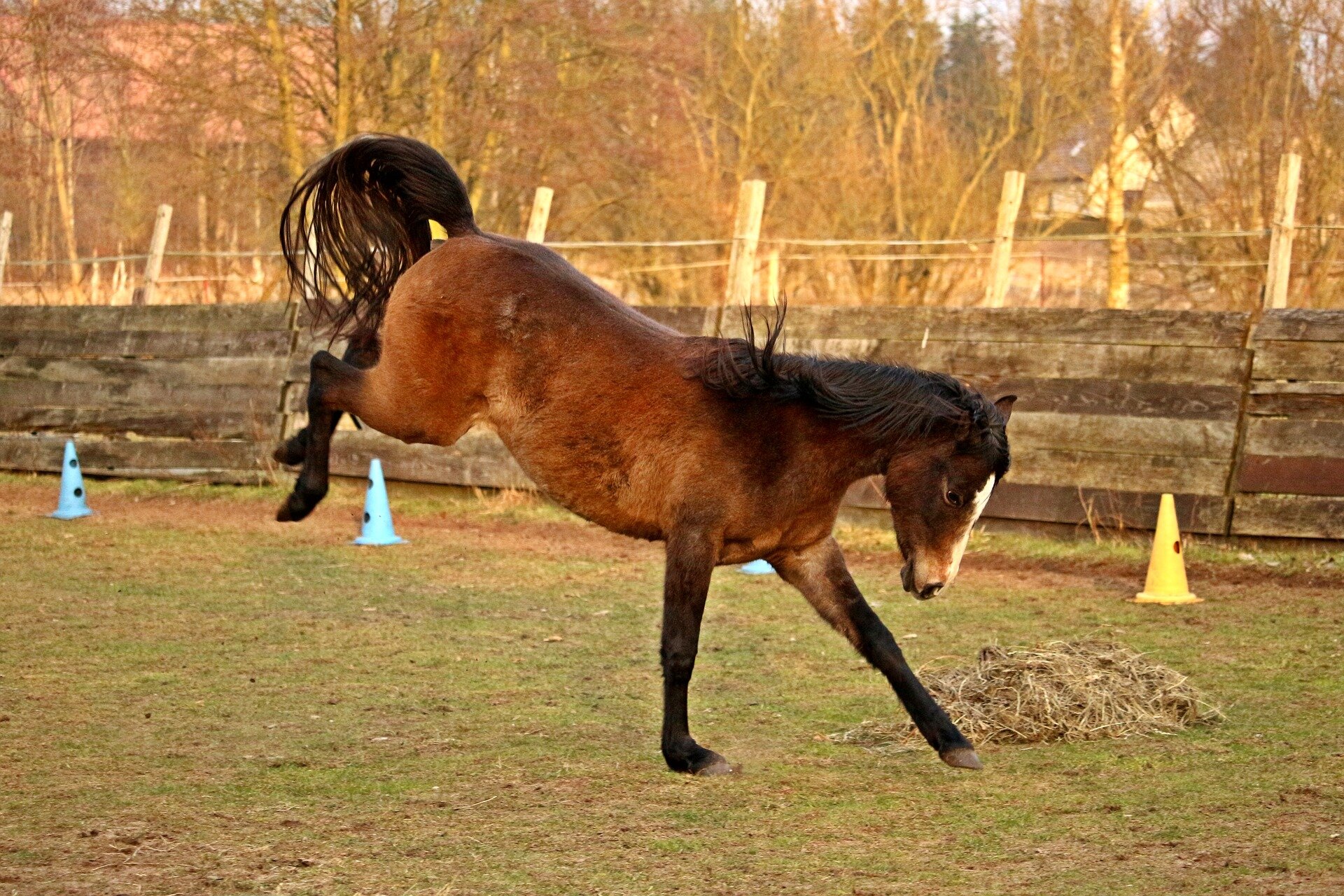
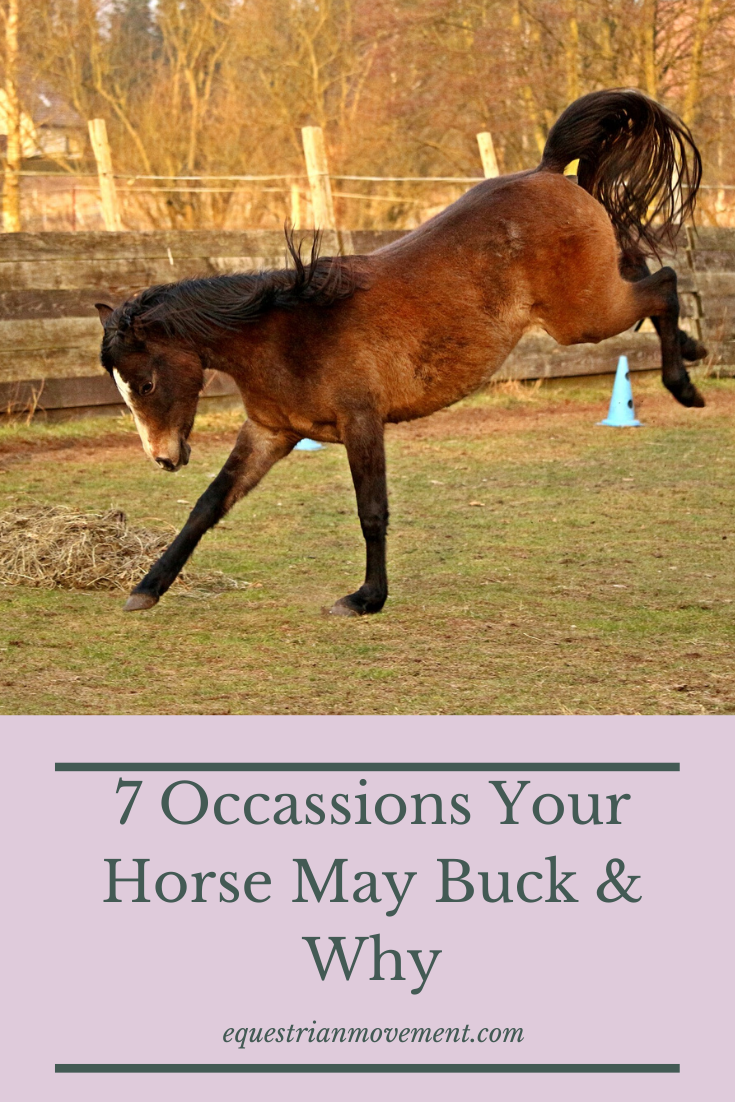

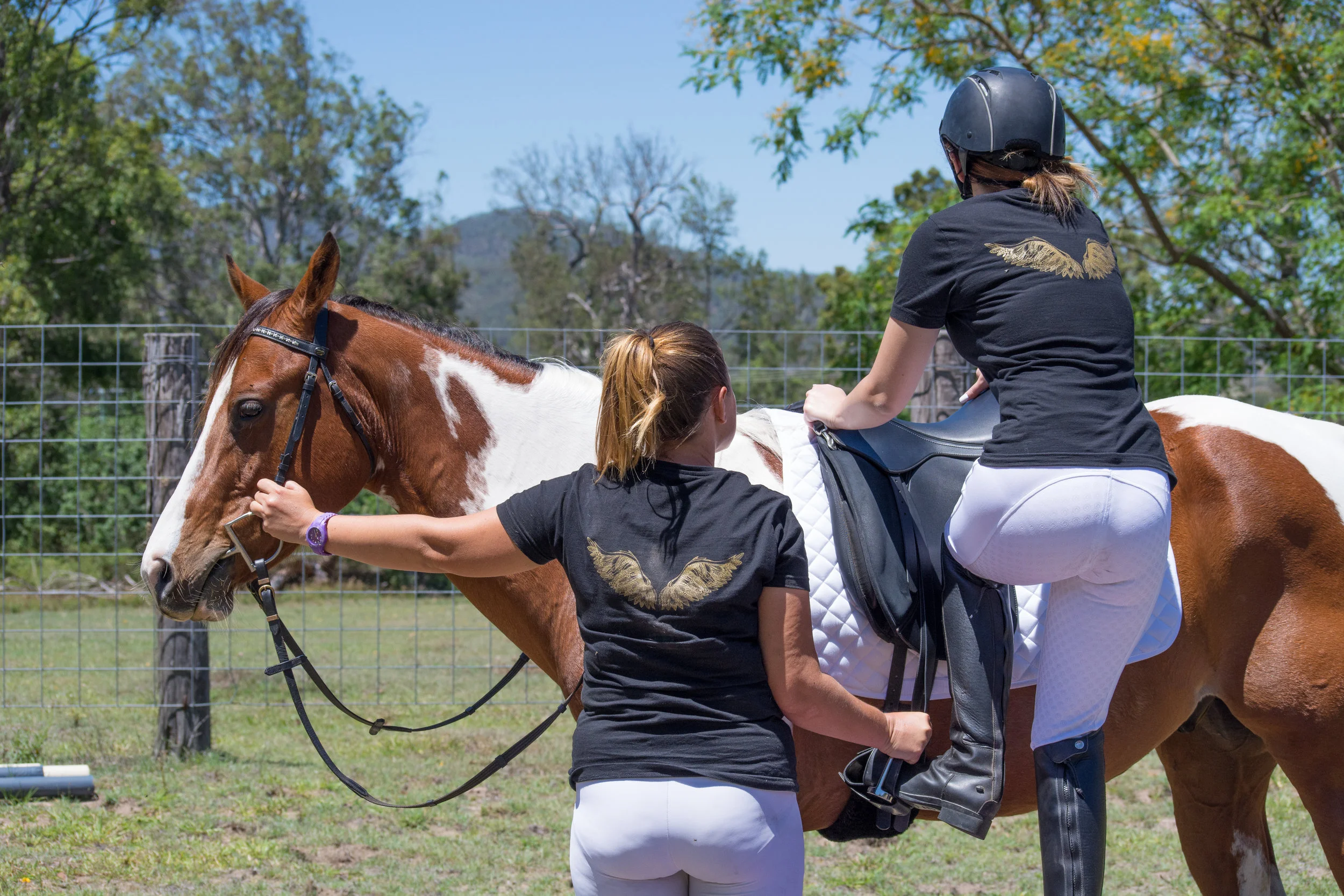
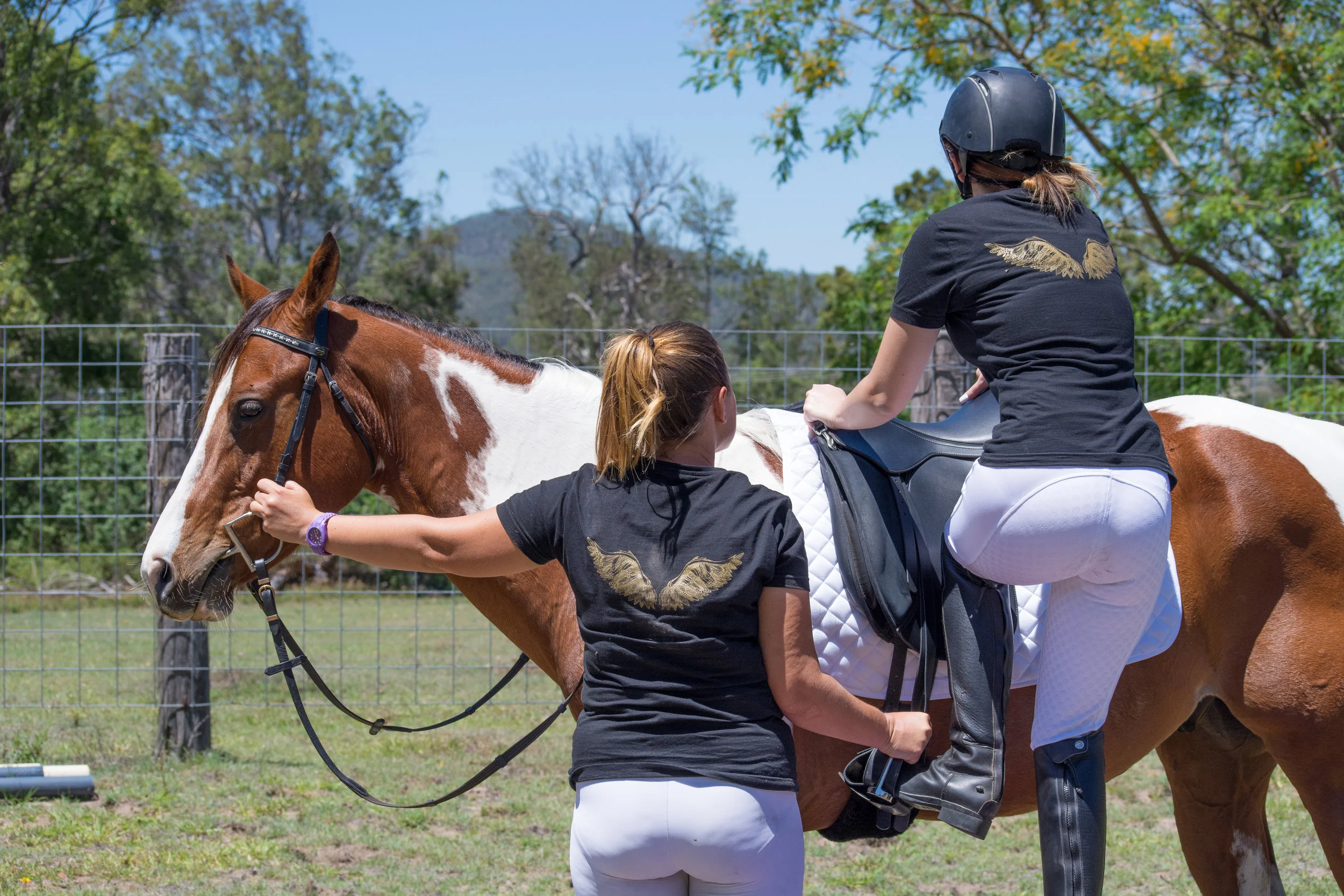
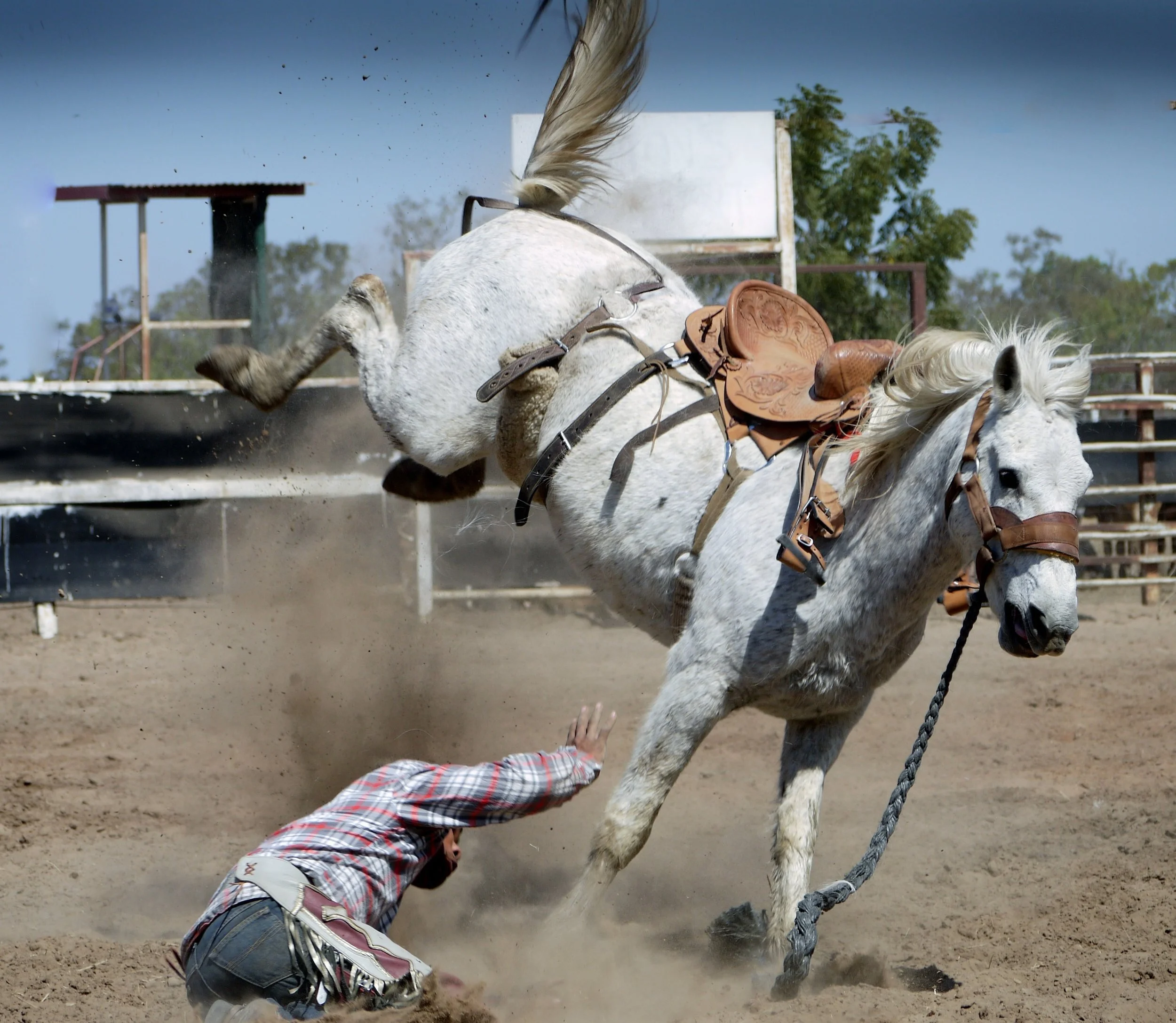

Stop the bucking, bolting and napping, and ride in a way that creates sound horses that love to be ridden… even if you are a beginner!